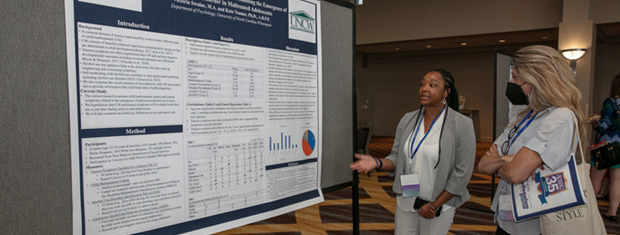




The APSAC Advisor is a peer reviewed quarterly news journal for professionals in the field of child abuse and neglect.
The APSAC Advisor provides succinct, data-based, practice-oriented articles that keep interdisciplinary professionals
informed of the latest developments in policy and practice the field of child maltreatment. It is designed to highlight
best practices in the field and publish original articles and current information about child maltreatment for professionals
from a variety of backgrounds including medicine, law, law enforcement, social work, child protective services, psychology,
public health and prevention in the U.S.
 If you wish to learn more about submitting an article to the Advisor, please click here.
If you wish to learn more about submitting an article to the Advisor, please click here.
This library contains Advisor issues dating back to the first issue in 1988. The most recent issue appears at the top.
Scroll down to select past issues by year and issue number. Once a publication appears in the box, you
can use the Enlarge button to open the document in a new window or tab (depending on how your browser is set up).
This will allow you to view the document with larger print.
To print a document, first use the Enlarge button to open the document in a new window or tab. Then use your browser's Print command.
To return here from a new tab, close the tab. To return from a new window, click your browser's Back button.
In the listing below, click on a year and issue number to see the articles in that publication.
2010 Number 2 and 3
Academic Gains by Youth in Residential Treatment
Children entering residential treatment often present with significant mental health and behavioral problems (Child Welfare Information Gateway, 2009). For example, in 2005, the Child Welfare League of America (CWLA) evaluated the characteristics of 1,321 youth living in 19 residential care facilities. Mental health records revealed that 93% had been given a psychiatric diagnosis, 40% were on antipsychotic medication, over half had experienced previous psychiatric hospitalizations, and on average, youth reported 5.4 prior placements.
School Social Work Services and Maltreated Children
School social work exists in some form in the majority of states in this country, and it is one of the largest and oldest specialty areas in the field of social work (Altshuler & Webb, 2009). Several universities offer special training programs to align with state certification requirements established by departments of education. Children who experience maltreatment are disproportionately poor, guaranteeing that most of these vulnerable children will have contact with public schools.
School-Based Child Sexual Abuse Prevention Programs: Implications for Practitioners
Schools are a primary location for the delivery of child sexual abuse prevention programs. This has both advantages and disadvantages. Further, despite the rapid growth internationally of school-based abuse prevention programs, there continues to be a lack of systematic evaluation, and many of these programs are implemented on trust rather than on evidence of their effectiveness (Finkelhor & Dzuiba-Leatherman, 1995; MacIntyre & Carr, 1999a; Topping & Barron, 2009).
APSAC’s response to the [DSM-V/Bernet] proposal that parental alienation syndrome (PAS) or parental alienation disorder (PAD) be included in the American Psychiatric Association’s Diagnostic and Statistical Manual of Mental Disorders, Fifth Edition (DSM-V), to be published in 2013.
The purpose of Journal Highlights is to alert readers to current literature on child abuse. Selected articles from journals representing the variety of disciplines reflected in APSAC's membership are presented in the form of an annotated bibliography.
APSAC Advisor 21(2-3): Full Issue